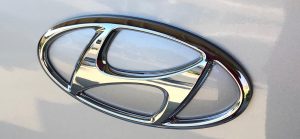 In fiction, we want to readers to build a complete picture of our characters in their minds. We do this through a character’s appearance, clothing, and possessions. Often, this includes the character’s vehicle. Vehicles have become characters in their own right, like the Millennium Falcon and the Starship Enterprise. But if we’re talking about contemporary life, we have to talk about the character’s car.
In fiction, we want to readers to build a complete picture of our characters in their minds. We do this through a character’s appearance, clothing, and possessions. Often, this includes the character’s vehicle. Vehicles have become characters in their own right, like the Millennium Falcon and the Starship Enterprise. But if we’re talking about contemporary life, we have to talk about the character’s car.
Automobiles are my brother’s area of expertise, and I encourage you to check out his Victory & Reseda website. My focus in this article is how to use cars to further plot and character development.
We judge people from the cars they drive
In Amiga, I have a scene where Laura looks at a car of someone from her past. What do we know about the person from their vehicle? (Edited to remove major spoilers).
It had the handicapped placard hanging from the rear-view mirror and a California Purple Heart license plate. [It was] a 10-year-old Ford Taurus with a dent in the rear passenger side panel. I didn’t believe in judging people by their cars, but something about that car showed me that things hadn’t gone well…
On the surface, we know that person was wounded in combat. That person is also having financial trouble if they can’t afford to fix a dent or get a newer car. The Taurus is a four-door sedan, which indicates that this person had kids. These are examples of how to create a clearer picture of characters from the cars they drive.
Brands make the person
The brand of car tells us more about a character. Does a person like practical brands like Ford, Toyota, or Hyundai? Do they prefer luxury brands like Mercedes Benz, Porsche, or BMW?
Here’s an example from my work in progress, The Remainders. Here, a character’s luxury SUV shows how that person is finally finding success—but the trappings of wealth can conceal despair.
I’m the voice in your head that keeps you from taking this stylish and powerful Lexus RX 450h in Eminent Pearl White with parchment leather interior, Lexus Enform App Suite with navigation and Bluetooth connectivity, and 15-speaker, 835-watt Mark Levinson Premium Surround Sound Audio System and driving it straight off a cliff.
The car’s contents complete the picture
To complete the picture of a character, we have to look inside the vehicle. What does the character carry around with them? An infant car seat? CDs (especially if it is an old car that still has a CD player)? A tassel from a recent high school graduation? Sugary treats stashed in the center console?
Small details tell a lot about a character, as in this next example from The Remainders. (Also edited to remove spoilers.)
I forgot about the glove. It was a softball glove I bought when [she] started playing. We used to play catch in the park. I later used it with [him] when he played. It wasn’t made for baseball, but I had broken it in enough by then so that I could grip baseballs with it. I kept it in the back of my Explorer. When I gave the Explorer to [him], I moved the glove to my Nissan Pathfinder. When the Pathfinder got totaled, I moved the glove to my new Lexus. I didn’t know why I kept a glove with me long after I stopped playing catch with the kids. Or I didn’t know until [he] asked me.
What do cars say about your character?
To use cars effectively in your stories, use your observation skills. As you walk through a parking lot, give a quick glance at the cars you pass. What condition are they in? Are they clean? In good condition? Do they have bumper stickers or custom license plate frames? Do not look inside the vehicle, because that violates the owner’s privacy. Instead, think about what you and the people you know keep in your vehicle. What do those items say about the person?
If you’re writing about cars you don’t own, research their features and controls. If you can go on a test drive or ride in a friend’s vehicle, this can be a helpful experience. Do an image search of the interiors. For antique cars, visit a museum and learn how those vehicles operate. Controls on older cars differ from ones today. (Even cars that are 15 years old have features that differ from today’s cars.)
Cars are an extension of someone’s personality, just like clothing and household possessions. Use cars to add to the reader’s impression of a character.




